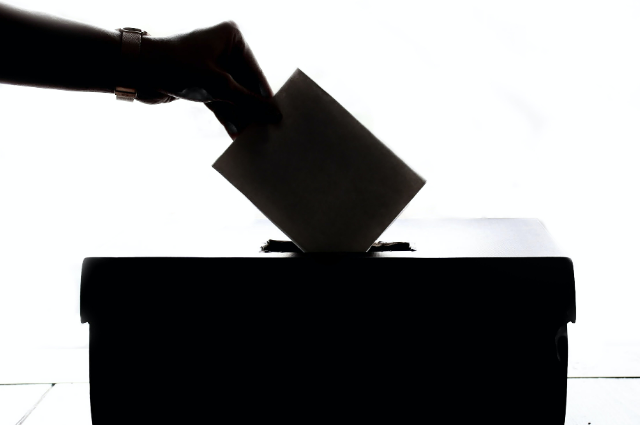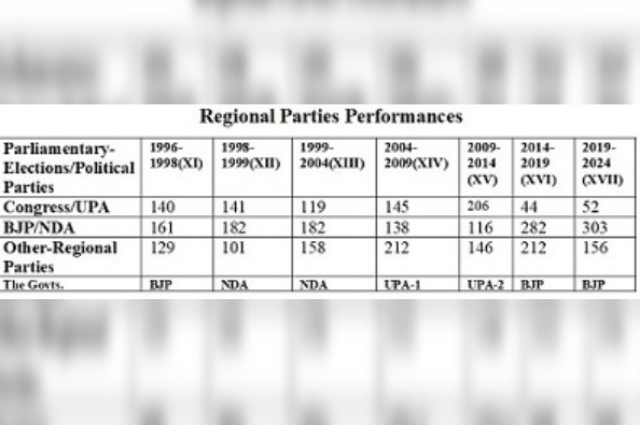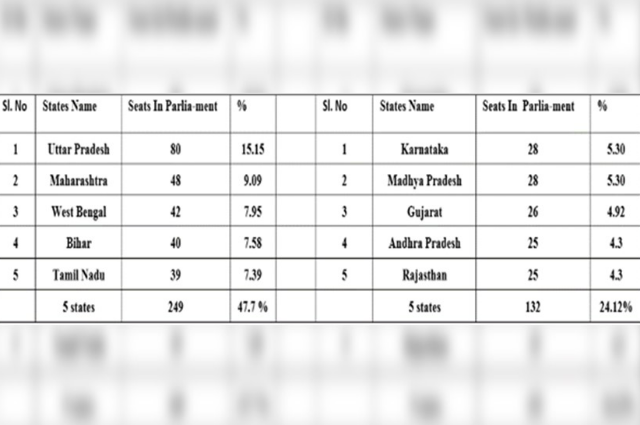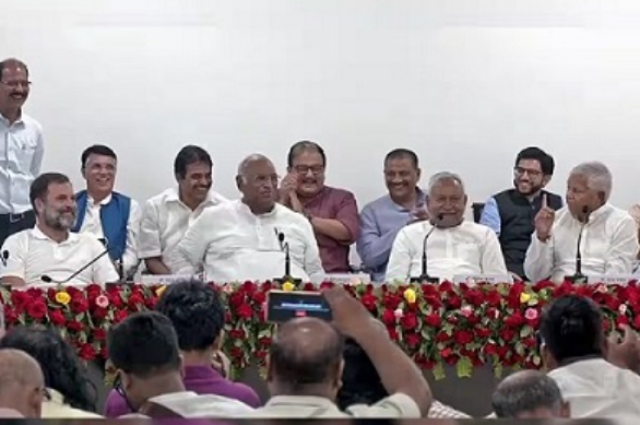
The next general elections will be a very tough one as the opposition parties met on 23rd June in Patna at the residence of Mr. Nitesh Kumar, Chief Minister of Bihar. The meeting made significance and the first time they met on one platform the major aim being targeting the BJP and NDA-led government at the centre. They wish to meet the other 10 parties and they will form a Common Minimum Programme which will be different from state to state depending on their local circumstances.
The Prominent leaders are Mr. Rahul Gandhi, Congress President Mr. Mallikarjun Kharge, Mr. KC Venugopal, Mr. Nitish Kumar, Mr. Laloo Prasad Yadav, Mrs. Mamatha Banerjee, Mr. Aklesh Yadav, Mr. Kejriwal, Mr. Shard Pawar, Mr. Udham Thackery, Mr. Echuri, Mr. Hemanth Soran, and Mrs. Supriya Suke
The Congress played a key role in listening to the grievances of all the other like-minded parties and they have heated discussions with the AAP but everyone wanted to bring change this time by uniting forgetting old or past prejudices.
In the meeting, Mr. Rahul Gandhi was optimistic about winning the state assembly elections of the following states namely Telangana, Madhya Pradesh, Chhattisgarh, and Rajasthan. Given confidence to all the assembled parties and why tall the non-BJP parties should be united to save our country from hatred and making fragmentation in the name of religion,
The BJP leader Mr. Amit Shas criticized and was very critical that they never come into one platform and he has ascertained that it is impossible to take for them to be united.
We have seen the BJP targeting non-BJP governments and all kinds of IT- raids and close monitoring of the important high-profile businessmen who are sympathizers of the non-BJP governments. The state and central relationships also we have seen that are not in tune with to present Federal setup of the system. The BJP wants to capture even in the south as we have seen they lost in Karnataka Assembly Elections.
The Congress on the other hand gained its popularity after the Bharath Jodo Yatra which was very popular among the middle and lower middle classes and it is received well by the people of all the states. Unlike earlier Mr. Rahul Gandhi also changed his perception and was keen on making good remarks on the present government functioning.
The other political parties know pretty well without Congress and it is not possible to be united by the opposition parties. The meeting was quite successful and they wish to have common agenda with the name of Progressive Democratic Alliance (PDA)they are planning the next meeting at Shimla.
The BJP party does have internal issues in particular in Telangana state and no senior leaders will ever allow to grow the upcoming or newly joined leaders in BJP. The southern states will certainly be a difficult task for the BJP when compared to the Northern States.
BJP has high expectations for the Telangana assembly elections in reality and it is only hype the party is making. We are seeing the difference among the BJP Presidents and Mr. Etela Rajender both wants prominent post and everyone is not working unitedly we have seen the recently joined BJPleaders are now realizing to change their loyalties to Congress.
The Congress on the other hand gained importance in Telangana after the Karnataka elections. Nearly 35 candidates are willing to join BRS in the next couple of days may be in the second week of JULY. The Congress has certainly a wedge with the BJP and its prospectus is increasing tremendously. On the other hand, the dissident from JAC and uniting to form against the present government and they would like to encash the votes on the anti-incumbency votes.
On the other hand, in Telangana State, the BRS chief Mr Chandra Shekar Rao visited different states and held meeting with other political leaders and wish to show his strength on his own. Other political parties are not in favour of supporting with BRS party. Mr. KCR instead of concentrating on his state wishes to establish their party identity by hook or crook at the National level. It may be very difficult for him as he is not getting support from other political parties the Congress is not in favour of BRS and most likely the other parties also will not join hands with BRS Party.
Regional Parties-Influence the Parliamentary Elections:
The 13 states with strong regional parties are Assam, Andhra Pradesh, Bihar, Jharkhand, Haryana, Karnataka, Maharashtra, Odisha, Punjab, Tamil Nadu, Telangana, Uttar Pradesh, and West Bengal. If they have a strong presence in state politics, they are likely to play a dominant role in the next parliamentary elections. (2)
The Regional parties won 129 seats in the 11th parliamentary elections, prominent among them are the TDP, DMK, and TRS, and again in the 13th and 15th parliamentary elections with 158 seats and 146 seats as the BJP lost its significance in the 16th and 17th parliamentary elections.
The regional parties won 212 parliamentary seats and aggregated a 47 percent share in 2014, which was the same as in the General elections in 2009.
The regional parties improved their vote share in two consecutive Lok Sabha elections (2009 and 2014) and the latest assembly elections held in those states such as AIADMK. DMK (2021) AITC, BJD, RJD, Shiv Sena, TDP, YSRCP (2019) TRS etc, improved their vote share as compared to the previous elections of 2009.
Regional Parties Performances

An Alternate Prerogative:
As of now, BJP has improved its performance as a National Party and formed a stable government reigning for two terms effectively. And next Parliamentary elections will be tough for the BJP against the regional parties who play a pivotal role. A similar UPA government might be formed but certainly, regional parties will have a say in National politics and one day the regional party leaders may become the Heads of State.
Congress’s performance will certainly improve in the upcoming general elections from two digits to three digits; if they can outsmart the BJP by coordinating with all the regional parties. The origin of the regional parties is an offshoot of the congress, as it seems evident that we may certainly witness stiff competition to the BJP.
State-wise Proportion of Parliamentary Seats:
Table: 1 & Table: 2

When we observe the stats mentioned above, nearly 47.7 percent i.e 249/543 seats fall in 5 states in Table 1, and nearly 24.12 percent project 132/543 seats of MP’s, in the other 5 States as in Table 2. If we club the two stats, we have 381/543 i.e. 71% seats. A political party that dreams to win the next parliamentary elections must concentrate on these ten states invariably. Out of which, the states of West Bengal, Tamil Nadu, Andhra Pradesh, and Telangana have predominant regional parties whereas Maharashtra has a strong (MVA) Shiv Sena party that stood against the BJP to form a regional party government. If any political party consolidates its position in the 10 states mentioned above, it might emerge as the single largest party in India. These are a few observations that I have concluded from the imminent changing political upheaval at the State and the National level.
. . .
Source:
- "A New Political Ethos: Panacea for Robust Societies" published by Sankalp Publication in 2021, author Kanagiri SN Prasad, ISBN Number 978-93-90720-79-8, Pages 153-160.

